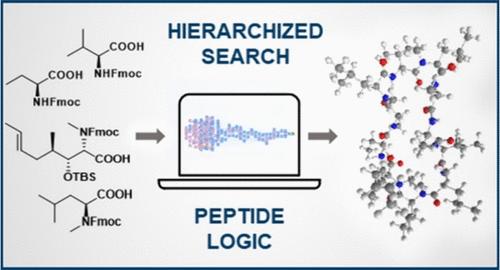Hierarchical Reaction Logic Enables Computational Design of Complex Peptide Syntheses
IF 14.4
1区 化学
Q1 CHEMISTRY, MULTIDISCIPLINARY
引用次数: 0
Abstract
The prevalent assumption in computer-assisted synthesis planning has been to rely on the wealth of reaction data and on the consideration of this vast knowledge base at every stage of route planning. Yet even if equipped with all requisite knowledge of individual reaction transforms and state-of-the-art search algorithms, the existing programs struggle when confronted with advanced targets, such as the complex peptides this work considers. By contrast, when the searches are constrained by hierarchical logic, dictating which subsets of reactions to apply at different stages of synthesis planning, these algorithms are able to plan, within minutes, complete routes to clinically relevant targets as complex as vancomycin and as large as semaglutide. Despite not being trained on any literature precedents, the routes designed by the algorithm mimic the strategies used by human experts. The hierarchical planning we describe incorporates protecting-group strategies and realistic pathway pricing and can be performed in solid-state or solution modes, in the latter case using either C-to-N or N-to-C peptide extension strategies.

求助全文
约1分钟内获得全文
求助全文
来源期刊
CiteScore
24.40
自引率
6.00%
发文量
2398
审稿时长
1.6 months
期刊介绍:
The flagship journal of the American Chemical Society, known as the Journal of the American Chemical Society (JACS), has been a prestigious publication since its establishment in 1879. It holds a preeminent position in the field of chemistry and related interdisciplinary sciences. JACS is committed to disseminating cutting-edge research papers, covering a wide range of topics, and encompasses approximately 19,000 pages of Articles, Communications, and Perspectives annually. With a weekly publication frequency, JACS plays a vital role in advancing the field of chemistry by providing essential research.

 求助内容:
求助内容: 应助结果提醒方式:
应助结果提醒方式:


